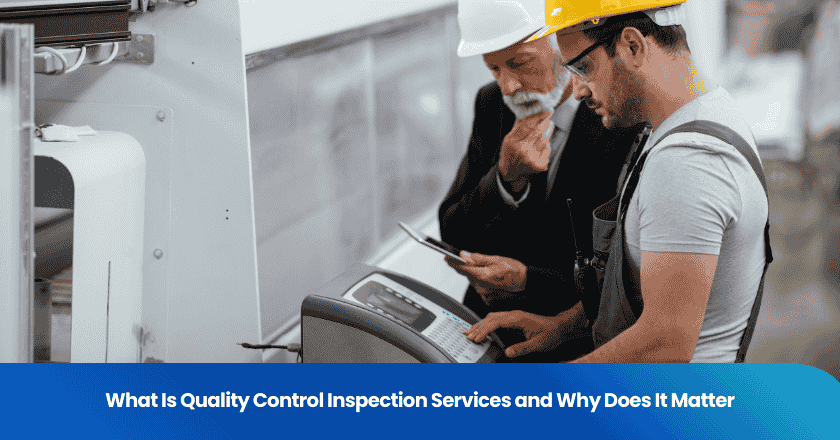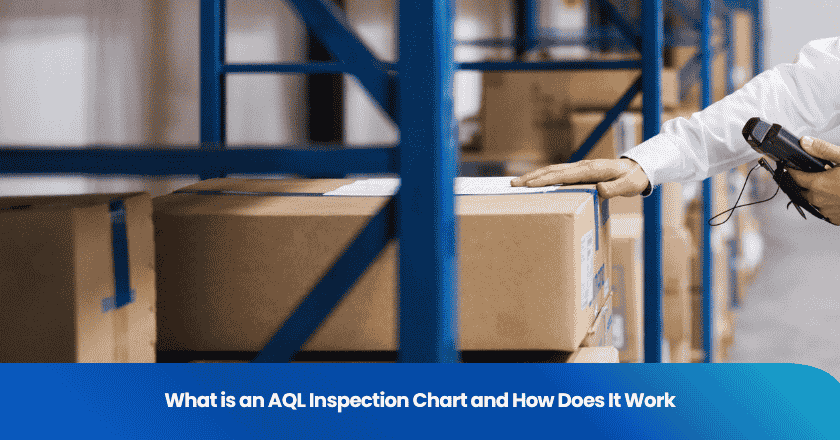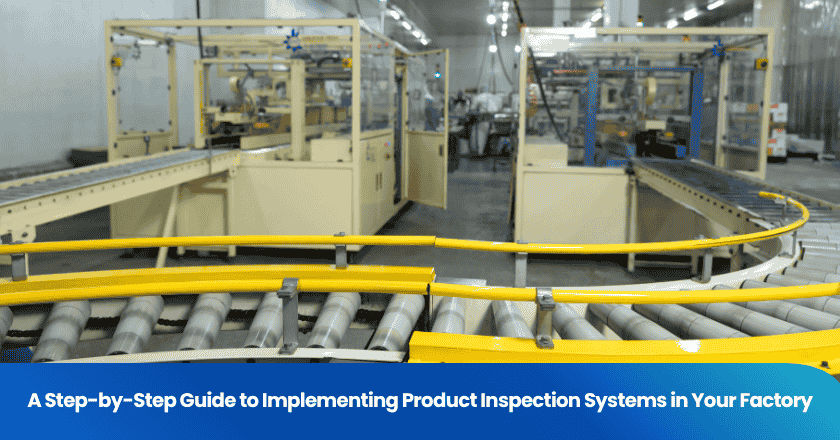
Quality control inspection services provide you with a systematic way to check products and processes, helping you meet strict quality standards and prevent costly defects. You gain several advantages by investing in these services:
- Defect rates often drop by as much as 25%, saving your business from cascading financial losses.
- You reduce costs tied to defects, rework, or recalls.
- Operational efficiency improves as you identify and fix bottlenecks.
- Consistent product quality leads to higher customer satisfaction and compliance with regulations.
You benefit from faster, more accurate checks and a safer, more reliable supply chain.
Quality Control Inspection Services
What Is Quality Control
You rely on quality control inspection services to ensure every product meets your standards before reaching customers. Quality control in manufacturing means you use a set of techniques and activities to achieve and sustain product quality. This approach helps you minimize defects and maintain consistency from raw materials to finished goods. You build trust with your customers and keep your business competitive by focusing on rigorous quality inspection.
Quality inspection services differ from general quality assurance. While quality assurance focuses on preventing defects through process improvements, quality inspection targets the detection and correction of defects in products. You use quality inspection systems to check products at different stages, making sure each item matches your requirements.
Note: Quality inspection is essential for meeting industry regulations and customer expectations. A reliable inspection process helps you avoid costly recalls and compliance issues.
The quality inspection process involves several key steps:
1. Define clear, measurable quality standards.
2. Inspect and test incoming raw materials.
3. Collect and test samples from production batches.
4. Perform in-process quality checks during manufacturing.
5. Record defects and implement corrective and preventive actions.
6. Maintain detailed documentation and records.
7. Conduct final product inspections.
8. Analyze data for continuous improvement.
You can streamline these steps with quality inspection software, which helps you track results and spot trends quickly.
Role of Inspectors
Quality inspection services depend on skilled inspectors. You need professionals who understand the quality control process and can spot even minor defects. Inspectors play a vital role in ensuring your quality inspection systems work effectively.
Inspectors help you maintain a reliable inspection process by catching issues early and supporting continuous improvement. Their expertise ensures your quality inspection services deliver consistent results and protect your reputation.
Types of Quality Inspection
Pre-Production
You start with pre-production inspection to catch problems before manufacturing begins. This step helps you verify that raw materials and components meet your standards for quality and quantity. Inspectors check if your factory has the right materials, tools, and resources to produce at scale. You benefit from early identification of issues, which prevents defects and non-compliance later in the process.
Tip: Addressing problems at this stage saves you time and resources by allowing for quick adjustments.
Pre-production inspection includes:
- Testing raw materials and components
- Assessing readiness for mass production
- Verifying specifications and quantities
In-Process
During production, you rely on in-process inspections to monitor quality as products move through each stage. Inspectors perform visual checks for surface defects and alignment issues. They use tools like calipers and micrometers to measure dimensions, ensuring parts match design specifications. Functional testing evaluates whether components perform as intended under real conditions.
Common in-process checks:
- Visual inspection for appearance and defects
- Dimensional measurement for accuracy
- Functional testing for performance
Note: In-process inspections help you catch problems early, reducing the risk of costly rework.
Final Inspection
You conduct final inspection to confirm that finished products meet your quality standards before shipment. Inspectors verify quantity, workmanship, measurements, and functionality. They also check compliance with safety regulations and review packaging and labeling.
Container Loading
You use container loading inspections to protect your products during transit. Inspectors supervise the loading process to prevent damage, reduce shipping errors, and ensure container integrity. This step also helps prevent theft and tampering, building trust in your supply chain.
1. Protects against transit damage
2. Reduces shipping errors
3. Ensures container integrity
4. Prevents theft and tampering
5. Builds trust in the supply chain
Callout: Container loading inspections are vital for safe delivery, especially in international trade.
Importance of Inspection
Preventing Defects
You rely on inspection to catch defects before they reach your customers. Early detection allows you to address issues at the source, which leads to fewer defective products leaving your facility. This approach supports defect prevention and strengthens your commitment to quality. You minimize scrap and rework, which saves time and resources. Inspection ensures that every product meets your standards and reduces the risk of warranty claims or recalls.
| Impact Type | Description |
|---|---|
| Reduced scrap and rework | Early detection avoids cascading rework downstream. |
| Minimized warranty claims | Products leaving the factory meet specifications. |
| Lower total cost of quality | Investing in inspection prevents far more expensive failure costs. |
The cost of poor quality can reach up to 20% of annual revenue. You avoid millions in wasted expenses by prioritizing inspection.
Ensuring Compliance
Inspection plays a critical role in helping you meet industry standards and legal requirements. You use systematic evaluations to verify that products and processes align with specific regulations. This process protects your business from penalties and ensures customer safety. You maintain detailed documentation, which provides accountability and supports audits.
| Task | Description |
|---|---|
| Ensuring compliance | Ensures that products and services meet specifications and legal requirements |
| Checking conformity | Uses test plans to verify adherence to standards |
| Monitoring tests | Regularly conducts tests to maintain quality throughout production |
| Documentation | Keeps records of quality checks and product releases for accountability |
- Quality control is essential for industries such as pharmaceuticals, food, and medical devices.
- Legal requirements often mandate quality controls to protect consumer safety.
- You must apply quality control throughout your value chain to maximize safety.
Inspection helps you avoid compliance issues and supports your reputation for meeting high standards.
Customer Satisfaction
You build trust with your customers by delivering products that meet their expectations for quality. Inspection ensures that you catch defects and inconsistencies before products reach the market. When you align quality assurance and inspection activities, you experience fewer defects and lower costs of rework. This alignment leads to higher customer satisfaction and repeat business.
- Fewer defects mean happier customers.
- Lower rework costs improve your bottom line.
- Effective quality assurance and inspection drive positive customer ratings.
Customers expect reliable products. Inspection helps you deliver on that promise.
Cost Reduction
You reduce costs by investing in inspection and quality assurance. Early detection of defects prevents expensive recalls and warranty claims. Inspection helps you avoid the cost of poor quality, which can consume a significant portion of your revenue. You improve operational efficiency by identifying and correcting issues before they escalate.
- Inspection services identify defects early in production.
- Early identification enhances product reliability and customer satisfaction.
- Fewer defects lead to fewer product recalls and warranty claims, which improves financial performance.
According to industry experts, proactive inspection is essential for managing risks associated with recalls and warranty claims. Manufacturers who implement rigorous inspection protocols avoid costly recalls and demonstrate a direct correlation between quality control measures and reduced warranty claims.
You protect your bottom line and reputation by prioritizing inspection and maintaining high standards.
Inspection Challenges
Common Issues
You face several challenges when implementing quality control inspection services in manufacturing. These obstacles can impact your ability to maintain high standards and deliver consistent results.
1. Maintaining consistent quality across global supply chains presents difficulties due to varying standards and practices.
2. Adhering to evolving regulatory compliance standards requires constant updates and vigilance.
3. Balancing cost-efficiency with quality standards often leads to tough decisions about resource allocation.
4. Implementing and managing advanced technology demands investment and skilled personnel.
5. Handling rapidly increasing consumer expectations for quality and transparency puts pressure on your processes.
Miscommunication caused by language barriers and cultural differences can lead to significant quality discrepancies. Understanding local business etiquette and culture is crucial for effective communication and ensuring quality standards are met.
You may also encounter misconceptions about quality control. Many manufacturers see quality as a final step, which increases waste and costs due to late defect detection. Some view quality control as the responsibility of a separate group, rather than a company-wide commitment. Upfront costs for quality management systems are often perceived negatively, even though they streamline processes and reduce risks. Quality documentation is sometimes seen as a burden, yet it is essential for compliance and efficiency.
Solutions and Best Practices
You can overcome these challenges by adopting proven strategies and leveraging technology.
1. Train your staff regularly to ensure everyone understands the latest manufacturing procedures.
2. Use role-specific checklists to cover all tasks and prevent oversight.
3. Implement standardized procedures by documenting every product detail and process, which helps avoid production delays.
4. Leverage technology to enhance inspection accuracy and reduce human error.
AI and machine learning algorithms allow you to analyze large amounts of data, identify patterns, and generate predictive analyses. These tools deliver faster and more efficient results, improving accuracy and productivity throughout your quality control process.
| Benefit | Description |
|---|---|
| Time Efficiency | Reduces inspection times by up to 50%. |
| Error Detection | Automatically identifies errors at any stage. |
| Faster Turnaround | Accelerates approvals and market readiness. |
| Simplified Workflows | Streamlines processes, reducing the need for large teams. |
| Comprehensive Inspection | Inspects all aspects, finding errors missed by manual checks. |
Automated systems reduce human error and improve accuracy. Machine learning algorithms estimate the severity of detected anomalies, helping you prioritize corrective actions. These systems adapt to various production conditions, operating effectively in uncontrolled environments.
Tip: Faster inspections minimize production interruptions and reduce costs from manual inspections and false positives. Enhanced quality control through real-time records supports better decision-making and continuous improvement.
You understand that quality control inspection services drive customer satisfaction and business growth. Every product you deliver must meet strict standards to ensure customer satisfaction and protect your reputation. Regular inspection at each stage of production guarantees product reliability, customer satisfaction, and compliance. You see customer satisfaction rise as you prevent defects and reduce costs. Customer trust grows when every product meets expectations. Customer loyalty increases when you prioritize customer satisfaction and product quality. Customer satisfaction leads to repeat business and positive feedback. You achieve customer satisfaction by focusing on product excellence. Customer satisfaction is the foundation of your success. Customer satisfaction, product reliability, and compliance set you apart. Customer satisfaction remains your top priority.
Make customer satisfaction your goal. Invest in quality control inspection services to ensure every product brings customer satisfaction and strengthens your business.
FAQ
What is the difference between quality control and quality assurance?
Quality control focuses on detecting and correcting defects in products. Quality assurance aims to improve processes to prevent defects from occurring. You use both to maintain high standards and deliver reliable products.
How often should you perform quality inspections?
You should perform inspections at every critical stage: before production, during manufacturing, after production, and during container loading. Regular checks help you catch issues early and maintain consistent product quality.
Who is responsible for conducting quality inspections?
Trained inspectors handle quality inspections. You may also involve supervisors or specialized staff. Their expertise ensures accurate results and helps you meet industry standards.
What tools do inspectors use during inspections?
Inspectors use calipers, micrometers, visual aids, and inspection software. These tools help you measure, test, and record product quality efficiently.
Can quality control inspection services reduce costs?
Yes. You lower costs by catching defects early, reducing rework, and avoiding recalls. Effective inspection helps you improve efficiency and protect your bottom line.
Grow your business with TradeAider Service
Click the button below to directly enter the TradeAider Service System. The simple steps from booking and payment to receiving reports are easy to operate.



